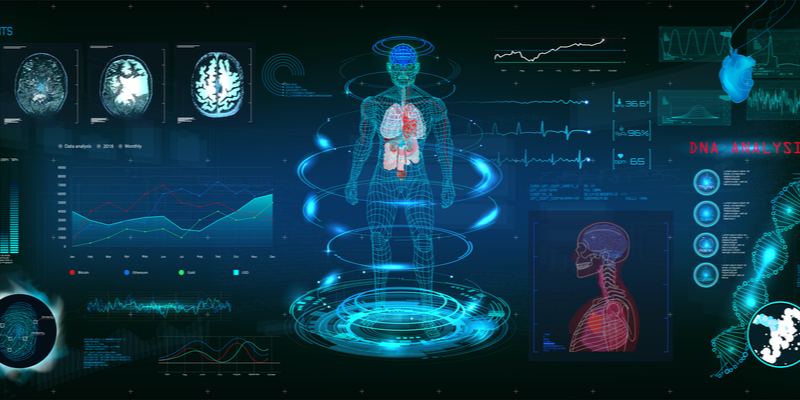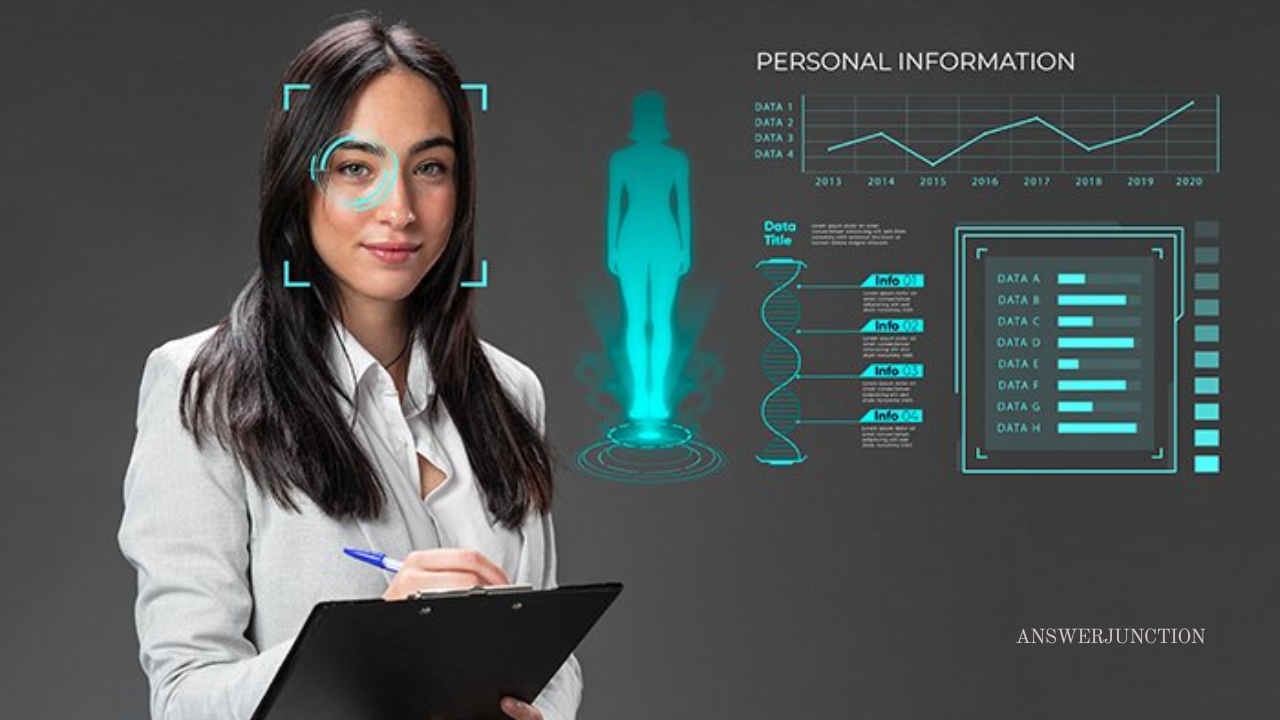In the rapidly evolving landscape of technology, human augmentation is emerging as a pivotal concept that seeks to enhance human capabilities through various means. This innovative approach integrates biological, technological, and digital enhancements to improve physical and cognitive abilities. As we delve into the intricacies of human augmentation technologies, it is essential to explore their various forms, implications, and the future they hold for humanity.
Understanding Human Augmentation

At its core, human augmentation refers to the enhancement of human physical or cognitive capabilities through the integration of technology. This can include anything from wearable devices that track health metrics to advanced prosthetics that restore lost functions. The primary aim of these technologies is not just to improve efficiency but also to enhance the quality of life for individuals. The field encompasses a broad spectrum of applications, from medical interventions that assist those with disabilities to advancements that enable healthy individuals to surpass their natural limitations.
Historically, the concept of augmenting human abilities dates back to ancient times, with tools and devices designed to extend our physical capabilities. However, the modern era of human augmentation has been propelled by rapid advancements in fields such as robotics, biotechnology, and information technology. This synergy has led to the development of sophisticated systems that can enhance our physical strength, cognitive functions, and even sensory perceptions.
Types of Human Augmentation Technologies
The landscape of human augmentation technologies is diverse and multifaceted, encompassing various types of enhancements. These can be broadly categorized into three main groups: physical augmentation, cognitive augmentation, and sensory augmentation.
Physical Augmentation
Physical augmentation technologies aim to enhance the physical abilities of individuals. This category includes advanced prosthetics, exoskeletons, and wearable devices designed to improve strength and endurance.
Prosthetics have come a long way from traditional devices; modern prosthetics are equipped with sensors and microprocessors that allow for natural movement and control. These advanced limbs can adapt to the user’s movements, providing a more intuitive experience. For instance, bionic limbs can mimic the natural movement of a human arm or leg, allowing users to perform tasks that were previously impossible.
Exoskeletons represent another significant advancement in physical augmentation. These wearable robotic devices are designed to assist individuals with mobility challenges and enhance the strength of able-bodied users. Exoskeletons are increasingly used in rehabilitation settings, helping patients regain movement after injuries. In industrial applications, they enable workers to lift heavy objects with minimal effort, reducing the risk of injury and fatigue.
Cognitive Augmentation
Cognitive augmentation focuses on enhancing the mental processes of individuals, allowing for improved learning, memory, and decision-making capabilities. Technologies in this domain include brain-computer interfaces (BCIs), neurostimulation devices, and cognitive training programs.
Brain-computer interfaces represent a groundbreaking area of research that enables direct communication between the brain and external devices. BCIs can help individuals with disabilities control computers or prosthetic limbs using their thoughts alone. For example, a person with paralysis might use a BCI to operate a cursor on a screen, allowing them to communicate more effectively.
Neurostimulation devices utilize electrical impulses to stimulate specific areas of the brain, enhancing cognitive functions such as memory and attention. Research into transcranial direct current stimulation (tDCS) has shown promise in improving learning capabilities and problem-solving skills. Such technologies could revolutionize educational practices by providing personalized learning experiences tailored to individual cognitive strengths.
Sensory Augmentation
Sensory augmentation technologies enhance human perception by extending or improving the capabilities of our senses. This includes devices that enhance vision, hearing, and even touch.
Vision enhancement technologies, such as augmented reality (AR) glasses, overlay digital information onto the real world, providing users with additional context and insights. These devices can improve navigation, enhance learning experiences, and even assist in complex tasks such as surgery.
Hearing aids and cochlear implants are prime examples of auditory augmentation technologies that significantly improve the quality of life for individuals with hearing impairments. By converting sound waves into electrical signals that stimulate the auditory nerve, these devices enable users to perceive sounds more clearly and engage in conversations with greater ease.
Ethical Considerations and Challenges

As with any transformative technology, human augmentation raises important ethical considerations and challenges. The prospect of enhancing human abilities invites discussions about equity, access, and the potential for misuse. For instance, if such technologies become widely available, will there be disparities in access that could create a divide between those who can afford enhancements and those who cannot? This digital divide raises concerns about societal inequality and the implications of enhanced individuals outperforming their unaugmented counterparts.
Another ethical concern revolves around the definition of what it means to be human. As we integrate technology into our bodies and minds, questions arise about the authenticity of human experiences. For instance, if cognitive augmentation enables individuals to learn faster or remember more, does this diminish the value of hard work and perseverance? These philosophical dilemmas will require careful consideration as society navigates the implications of these technologies.
Additionally, privacy concerns loom large in the realm of human augmentation. As devices become more interconnected and capable of collecting vast amounts of data about users’ behaviours and health, the potential for misuse and breaches of privacy increases. Striking a balance between the benefits of enhanced capabilities and the need for privacy and security will be crucial in developing and implementing these technologies.
The Future of Human Augmentation
The future of human augmentation technologies appears promising, with ongoing research and development driving innovations that could fundamentally alter the way we interact with the world. As the boundaries between biology and technology continue to blur, we can anticipate several trends shaping the landscape of human augmentation.
Integration with Artificial Intelligence
Artificial intelligence (AI) is set to play a significant role in the evolution of human augmentation. By leveraging machine learning algorithms, devices can become smarter, adapting to individual users’ needs and preferences. For example, AI-driven personal assistants could analyze users’ habits and provide tailored recommendations for improving cognitive performance or physical health.
In healthcare, AI can enhance diagnostic processes and treatment plans by analyzing data from augmented individuals. This integration could lead to personalized medical interventions that cater to each patient’s unique requirements, ultimately improving health outcomes and quality of life.
Advances in Biotechnology
Biotechnology is poised to revolutionize human augmentation by developing innovative methods for enhancing biological functions. Genetic engineering and CRISPR technology may enable the modification of human DNA to enhance physical and cognitive traits. While this raises significant ethical concerns, the potential for eradicating genetic diseases and enhancing overall health is compelling.
Moreover, advancements in tissue engineering and regenerative medicine could lead to the development of bioengineered organs and tissues that enhance human capabilities. Imagine a future where individuals can grow replacement organs or even augment their existing ones to enhance performance.
Enhanced User Experience and Accessibility
As human augmentation technologies evolve, the emphasis on user experience and accessibility will become paramount. Designers and engineers will need to create intuitive interfaces and devices that seamlessly integrate into everyday life. This includes ensuring that enhancements are not only effective but also user-friendly and accessible to individuals with varying levels of technical proficiency.
Moreover, increasing awareness and education about human augmentation will be essential for fostering acceptance and understanding within society. Initiatives that promote inclusive dialogue about the implications of these technologies will help mitigate fears and misconceptions, paving the way for broader acceptance.
Human augmentation technologies are at the forefront of a new era in which the boundaries of human capability are being redefined. With advancements in physical, cognitive, and sensory enhancement, we stand on the cusp of a transformative future that holds the potential to improve lives and enhance the human experience. However, as we navigate the complexities of these technologies, it is crucial to address the ethical, social, and privacy concerns they present.
By fostering a balanced approach that prioritizes inclusivity, ethical considerations, and user experience, we can harness the power of human augmentation to create a better future for all. As we embrace this evolution, the conversation surrounding human augmentation will play a pivotal role in shaping our society’s values and defining what it means to be human in an increasingly technological world. The journey toward human augmentation is just beginning, and its implications will reverberate through generations to come, inviting us to rethink the very essence of humanity itself.




